Female Muslim Exemplar for our Time: Profiling a South Indian Figure
An old lady, with the fatigue and age-old illness of her seventies, entered the crowded Rawḍah Sharīf (the precious area between the Messenger’s (ﷺ) grave and his pulpit). Her wish was only to spend some time beside the bosom that had blossomed in her heart since childhood. Her son Sayyid Ahmad Koya accompanied her to the gate. She was straining to put each step ahead. Unexpectedly from nowhere, two absolute strangers, who introduced themselves as mom and daughter, greeted her and asked, “Are you Khadeeja Beevi?” to which she nodded positively.
Afterwards, they stood on both sides and began to guard her from the crowd and guide her to various places inside with humble instructions. She prayed peacefully in Rawḍah, taking enough time and melting in supplications without interruption. In the packed Rawḍah, they ensured she had a comfortable space for her worship. Before exiting, they asked to pray again; by then, one of them disappeared. She asked about her, the other one replied that she went to Jannat al-Baqī’ (the oldest and the first Islamic cemetery of Madinah in the Hejazi region of present-day Saudi Arabia). Then, she guided her to the exit door where her son was panicking, awaiting her. She has no clue yet who these strangers are, but she knows that was help from Allah.
On a Friday morning back in Kerala, with her weak physique and strong psyche, she ascended the stairs to the second floor with her tasbih (prayer bead) in her hand. She was tired, but her face was serene and luminous. It was for listening to the wa’z (religious talk) of her grandson, which could be heard as a broken voice from the nearby masjid after the Jumu’ah prayer. Towards knowledge, it was her approach, and she maintained that quest throughout her life. She used to ask her relatives and visitors to read passages from her Islamic books aloud, mainly about the afterlife.
These events are some snapshots from the life story of Sayyidat Khadeeja Beevi from Palloor, a rural village in Thrissur district, south India, who was and still is a lighthouse for several people who stood around or passed by her. Beevi was born on November 15, 1932, and departed this world on April 6, 2013. She lived in a small house all her life and never ventured out except for her pilgrimages to Makkah and visiting the revered places in India. A descendant of the Prophet Muhammad (ﷺ), she was born to parents immersed in the spiritual tradition.
Her life was an uninterrupted stream of struggle, patience and perseverance. For many, she was a ship to the shore. She is an enlightened soul and spiritually inspired exemplar. The beacon of light and the asset of wisdom. Her presence was a healing experience for the whole household.
In every second, she submerged in the remembrance of God and breathed the depth of sanctity. She stood steadfast in her convictions in the world of delusion. She lived in the complete awareness of death and return to God. She had a transparent life without shadows, like an open book. Very soft-spoken, she was concerned about decorum, comportment and how she carried herself without causing any hurt to any creature.
She was an admonition
In the world of illusion
Who illuminated tradition
loved without condition
Life is a chain of moments. Moments become treasures when they are dipped in the alchemy of the spirit. The moments that are profoundly merged with the import of our existence on earth. They become magical memories with lasting insights because these vivid flashes carry meaning.
One way of diving into resourceful moments is by being in the company of an ‘exemplar.’ Exemplar means “a good example of something” or “a person or thing serving as a typical example or appropriate model.” Usually, examples are used to clarify complex concepts, provide a better understanding, and reduce the chances that an idea is wrongly applied in real-life situations. Good examples can substitute for lengthy descriptions. The beloved Messenger (ﷺ) is introduced as the best example (Uswah) in the Quran. {Indeed, in the Messenger of Allah, you have an excellent model for whoever has hope in Allah in the Last Day and remembers Allah often} (Aḥzāb: 21). The word “Uswah” (example) is used in other places, as well in the Quran, such as:
- {You already have an excellent example in Abraham and those with him, when they said to their people, “We totally dissociate ourselves from you and shun whatever idols you worship besides Allah.} (al-Mumtaḥanah: 4).
- {There was indeed in them an excellent example for you to follow for those whose hope is in Allah and the Last Day.} (al-Mumtaḥanah: 6)
The Muslim sage is an example. He/she converts the deep formulas and theories we read in books into picturesque portraits. It thus eases the process of learning and following in their footsteps. The life of a Muslim sage is an artistic painting. It carries the intrinsic beauty imbued in Islam. It is just another drop, but immensely deep, that bears a sea within. However, they are a rare breed, as the Prophet (ﷺ) said: “Verily, people are only like camels. From one hundred, you will hardly find one suitable to ride.” (Ṣaḥīḥ al-Bukhārī 6133).
Her graveyard is beside this masjid, in West Pallur, Deshamangalam, Kerala.
Ṭabaqāt, the genre of Islamic biographical literature, provide a remarkable account of life stories and real life experiences. We have several male and female saints, despite the disproportion in the reporting, narrating, profiling, exploring and analysing the female stories. Female sages are the least explored. Their lives need to be reopened and profiled. Their models are a wholesome reference for many people in the age of fake feminine portrayals and demands for artificial equality, which at times is nothing less than an exploitation of the female soul. They live before us a wholesome and balanced, harmonious, and compassionate life. They are illuminated within themselves and revive awareness in their circles. Sanctity is their symbol. They are actually to be pursued and emulated. Sainthood is a station to land as a result of the spiritual renaissance.
Beevi was born to Sayyid Abdurrahman Kunhi Koya Thangal and Fathima Zahra (Imbichi Beevi). Her marriage was with Sayyid Muhammad al-Bukhari, locally known as Kunhi Thangal Palloor (1915-1970), a revered scholar and sage. In the early period of their marital life, poverty and starvation permeated the whole village. Her husband was Hafiz al-Quran, who always kept an umbrella to guard his eyes from unknowingly casting on indecent sights. She had lost four of her eight children, who passed away before their fourth year. When he fell ill for five years, bedridden, she took after and nursed him alone, without complaints. Her husband departed this world when she was 38 years old. Their last daughter (Suhara Beevi) was only three months old. In these extremely trying times, she wore the garment of sabr (patience). She put immense sacrifices to bring up the children alone. She found ways to feed her four small children within the four corners of her tiny house.
She had goats and buffaloes, the milk of which was her source of income for many years. She brought perfumes from Bombay and started selling to locals, in that way, she found sustenance for the family. Through hard work, she became a source of help for her relatives. She sold her land to help her relatives meet the wedding expenses. She donated her land, which she earned with her sacrifice, to religious institutions.
Tawakkul (reliance on Allah), not in words, but that meaning coated her heart. Tawakkul matured her personality. Tawakkul enabled her to dream of greater heights. Her key was the regularity and consistency (istiqāmah) of ritual and virtual practices. ‘Sacred monotony’ (wird) was her constant company. The wheel of fear and hope was always in operation.
She was in veil from all non-mahram (a person with whom marriage is generally permissible). That did not stop her from playing her social roles effectively. She played an instrumental role in the construction of three masjids. She did ṣulh (conciliation and peace-making) in disputes presented to her by locals and relatives. She successfully fulfilled her welfare projects for nears and dears.
From her earnings, she devoted a portion to helping the administration of masjids nearby and offering food for the imams and ustazs. Attracting to the grandeur of her character, some of her neighbours embraced Islam. One-third of her night was solely for prayers and supplications. Her eyes brimmed with tears in pre-dawn prayers. During the daytime, she devoted much time to amiably engaging with visitors who came to her to seek advice and prayers.
The worldly glitters did not allure her, nor she used any beauty materials. She turned an indifferent eye to the worldly joys. She took the joy and misery of this world as temporary, so she had a calm and composed demeanour throughout. It was life without complaints, and whatever she had was treated with immense gratitude.
She had a strong passion for knowledge. As for formal education, she had primary schooling only. She learned from her father and husband, who were ascetic and transformative. From an early age, she started imbibing the spiritual teaching of her deep-rooted and self-disciplined father and husband.
In Madinah, she had extraordinary spiritual experiences two times. Once, in a dream, the Messenger (ﷺ) advised her not to look at the television. Even if it were religious speeches, she sat in the opposite direction to avoid visuals on TV. She travelled to Makkah and Madinah multiple times for Hajj and Umrah in her physically weak years.
For many, she equates to a castle of peace on earth or like a luminous piece of moon in the dark corridors of life. Her presence charged a sense of electrifying aura to the atmosphere.
What is the best thing that happens to a seeker (murīd)?
It is having the sanest human being as their guide.
Then, what makes a guru feel blessed?
It is having a sincere seeker as his disciple.
She was a simple, wise, but sagacious human being who lived on earth with immense piety and remembrance of God. She made an intensely radiant universe within the walls woven by the long hours of worship, learning and social service. She was a pure ascetic and harmonious to the pristine nature, with luminous virtues. She extinguished her ego through various purifications. She elicited love for all who came to her and left a profound influence. She penetrated the universe with invocation, remembrance, and solitude. May God sanctify her soul.
Looked at her,
Saw Islam
That walks on two legs!
The Prophet (ﷺ) said, "A wise person is the one who calls himself to account (and refrains from doing evil deeds) and does noble deeds to benefit him after death. The foolish person is the one who subdues himself to his temptations and desires and seeks from Allah the fulfilment of his vain desires".
About the author: Sayyed Mohamed Muhsin, PhD is Assistant Professor of Islamic jurisprudence at the International Islamic University Malaysia (IIUM), Kuala Lumpur. He also serves as Editor-in-Chief of Islamonweb-English (https://en.islamonweb.net/). He is an adjunct fellow at Guidance College, Houston, Texas and Darul Huda Islamic University, Kerala, India. His specialization is on contemporary juristic issues and Islamic biomedical ethics.
Disclaimer
The views expressed in this article are the author’s own and do not necessarily mirror Islamonweb’s editorial stance.

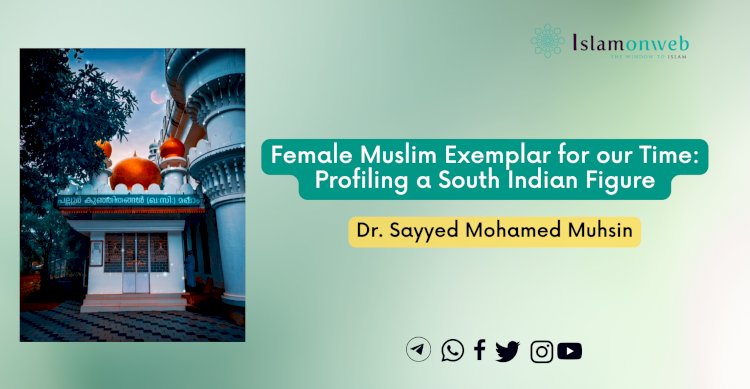



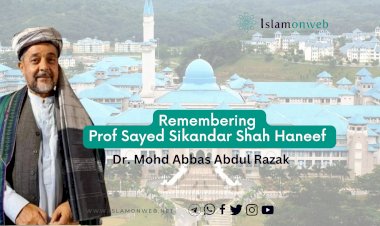

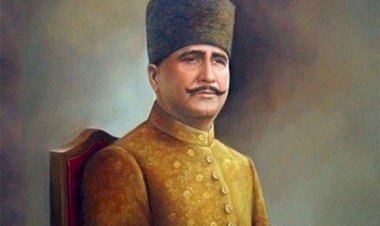
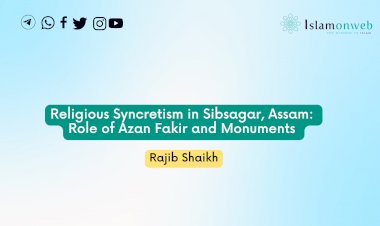

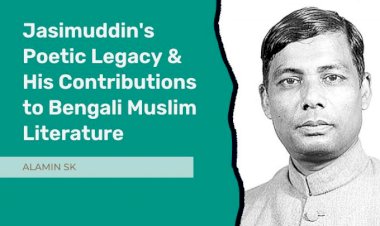














Leave A Comment